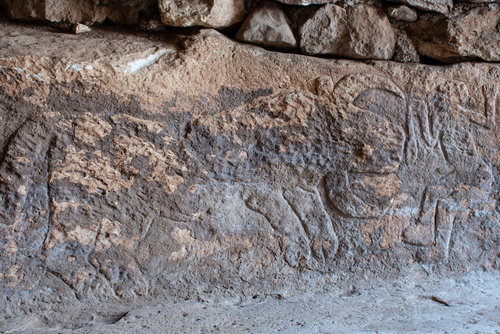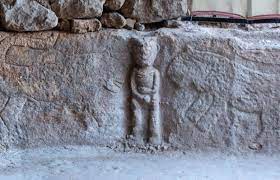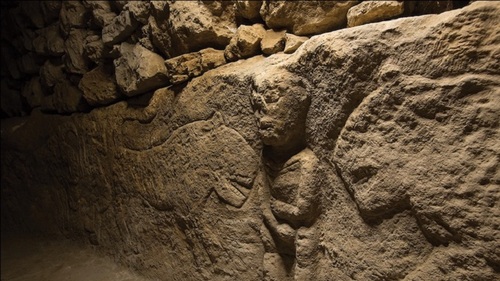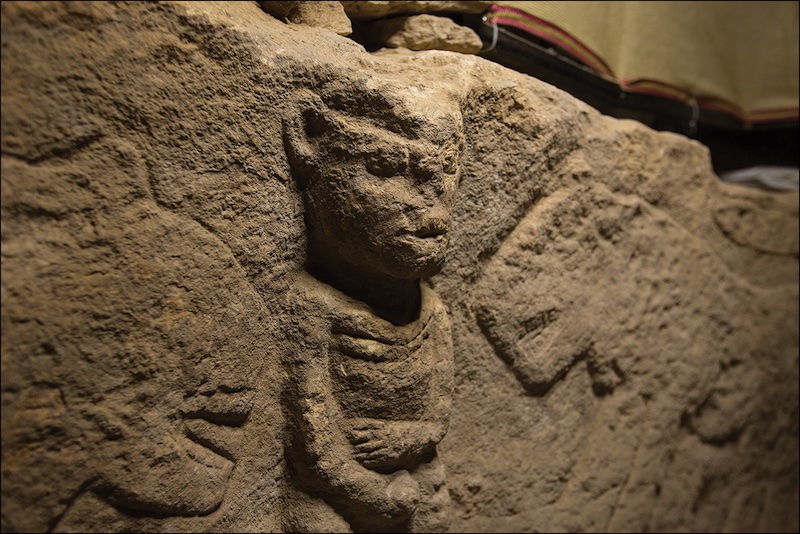Kurdshop_ Near Girdi Mirazan, there is a stone tableau with a carved figure of a man as old as 11 thousand years. It is recorded as the oldest artistic tableau in the archeology records.
On this stone wall, there are 5 figures carved including two people, an ox, and two panthers. One of the men has a snake in his hand and the other has his phallus.
Based on an article published in Antiquity’s Project Gallery, the researcher “Ailam Ozdughan” says: “We have very little knowledge on which civilization did carve these figures on the stones”.
Ailam Ozdughan, an archeology expert at Istanbul University, said: “The structures found in this area possess a mutual culture. They have mutual relationships and they are of related societies and cultures.”

According to the samples collected from this area and based on the radiocarbon tests done on these samples, their age would be identified. The researchers believe that these figures are from 11 thousand years old. These tests can show the exact age of these figures. Since these stone figures have been found in the ancient city of Saibourch, it is supposed that those hunters and collectors’ groups and communities who changed their lifestyles to be habitant groups 11 thousand years ago have settled in this area.
Last year in the “Saibourch” area in “Qerekoprou” town near “Rahha” which is a historical city, research began and several structures from the Neolithic era were found.
Due to the significance of the historical city of Saibourch, many contemporary tall buildings will be destructed so that all the historical structures would appear. These carved tableaus are the oldest portraits recorded so far.

The picture of a pig which was found in 2021 in Indonesia was estimated to be as old as 44 thousand years so it was recorded to be the oldest artistic picture ever found.
Archeologists found a 12-thousand-year-old stone in 2011 with a bird and a person’s figure carved on it. The written words on this piece which was prepared in 2019 named it an artistic work. However, some archeologists think this claim is controversial.
According to Ailam Ozdoghan, the figures found in Saibourch show two pictures. In one of them, a man and an ox, and on the other piece two panthers stand on each side of a man and this is how the story is shown. One of these two men has taken his phallus in his hand but the other one does not look like that. These figures are carved on a 3.7-meter-wide stone to show the threats they had to face.

In these carvings the panthers’ teeth and the ox’s horns are visible but it is not clear what these signs mean yet.
Ailam Ozdoughan also points out that in regions like Girdi Mirazan and Saibourch, one can conclude that a male dominant world existed. The male wild animals and the men’s figures are combined to show this fact.
Jens Notroff, an archeologist at German Archeological Institute, is working on the Neolithic era and he said: “The art of identifying and narrating was a male artistic feature. The Neolithic era hunters easily understood the message of this tableau but we have not been able to discover what these figures try to tell us.”








